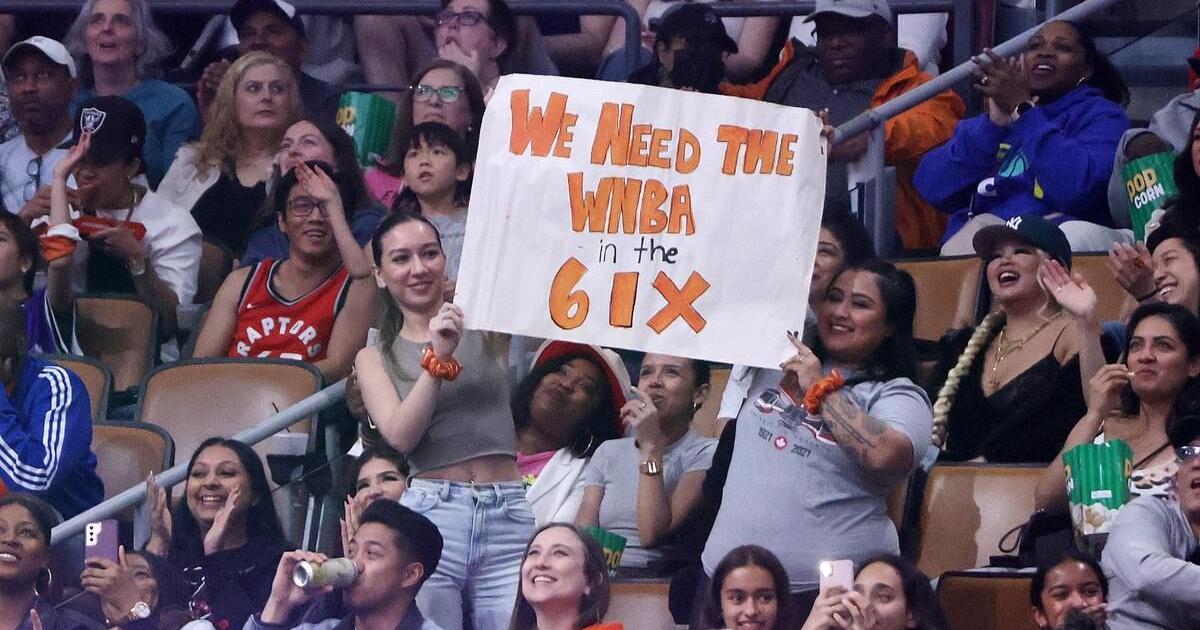hockeywiz542
Registered User
- May 26, 2008
- 16,225
- 5,292

Toronto’s WNBA dream was dead months before the exhibition game: The inside story of how MLSE walked away
Sources tell the Star an internal MLSE report laid out a case for going after a WNBA franchise — but when the two top bosses at Rogers opposed it, the idea died.
On May 13 of this year, more than 19,000 basketball lovers packed Scotiabank Arena in downtown Toronto for a pre-season game between the WNBA’s Minnesota Lynx and Chicago Sky. From the first whistle to the final layup, by Chicago forward Kahleah Copper, the sellout crowd chanted, cheered and waved signs all designed to deliver one message: Canada is ready for its own women’s professional basketball team.
What those fans didn’t know is that by the time the Sky’s Alanna Smith won the jump ball to start the game that day, Toronto’s WNBA dream was already dead. Maple Leaf Sports & Entertainment (MLSE), the corporate partnership that owns the Toronto Raptors, the Toronto Maple Leafs and five other men’s professional sports teams in the Toronto area, had decided months earlier not to bid on a WNBA expansion team this year, the Toronto Star has learned.
That decision — which shut Toronto out from the booming women’s sports industry at a time of unprecedented growth — came at a contentious board meeting that split representatives from the three companies that control MLSE, sources told the Star. “It was (Rogers CEO) Tony (Staffieri) and (Rogers chair) Edward (Rogers) against, everyone else for,” said a source familiar with the discussion, who, along with other sources quoted in this story, was granted anonymity to speak frankly about confidential board matters.
The opposition from Rogers and Staffieri came despite an internal MLSE business case, presented to the board, that multiple sources say projected a potential path to profitability for the franchise (after several years of losses) and in the face of passionate support for the idea from some senior figures within the organization. It also flew in the face of external research suggesting the market for professional women’s sports in Canada is massively underserved.
“This is definitely a conversation about building something. It’s a conversation about growth,” said Allison Sandmeyer-Graves, the CEO of Canadian Women & Sport. “The benefits flowing to those that have invested are real.”
There is no guarantee professional women’s basketball would have worked as a business in Toronto. Even if MLSE had won the rights to a new franchise, the team would have faced multiple structural barriers to success, including the fact that WNBA games are played indoors in the middle of summer, a tough sell in the crowded Toronto sports and entertainment marketplace.
A second source familiar with the board debate, meanwhile, said the preliminary estimates they saw “showed there wasn’t a business case to warrant participating in a bid process.”
“The numbers didn’t even address the gulf in salaries paid to male and female athletes, and there was a clear view that this inequity needed to be addressed by anyone looking to purchase the asset,” the source said.
But some WNBA backers believe that if MLSE was going to jump into the women’s sports market, now was the time to do it. The upfront investment would have been relatively small: a $50-million (U.S.) expansion fee against MLSE’s estimated $8-billion valuation. And the rewards were potentially huge.
Toronto would immediately become the WNBA’s fourth- or fifth-largest market (depending on how you measure the Chicago area), with a population far larger and with far more spending power than current WNBA cities such as Indianapolis, Indiana and Uncasville, Conn.
The market for professional women’s sport in this country is already valued at between $150 million to $200 million, according to a 2023 Boston Consulting Group report put out by Canadian Women & Sport. What’s more, that market is “significantly underdeveloped,” the report said, with fan appetite far outstripping the available offerings.

/cloudfront-us-east-1.images.arcpublishing.com/pmn/BD7L3RQ6OJA6FAGFUUNHCOTAEI.jpg)
/cloudfront-us-east-1.images.arcpublishing.com/pmn/BD7L3RQ6OJA6FAGFUUNHCOTAEI.jpg)